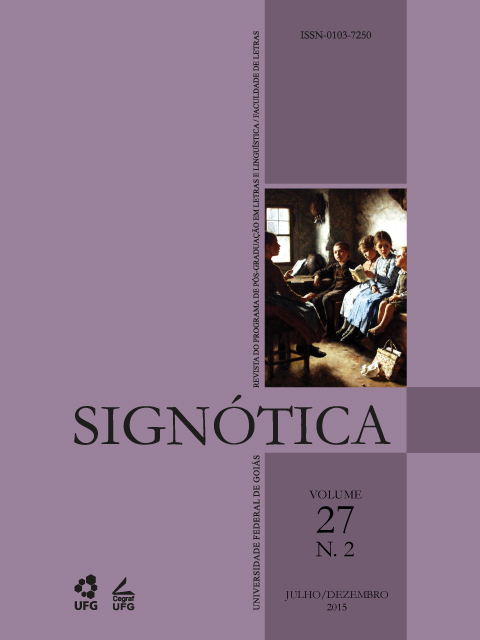Aspectual construction V1take + prep to + V2infinitive and V1catch + prep to + V2infinitive in Portuguese: is this a case of linguistic variation?
DOI:
https://doi.org/10.5216/sig.v27i2.30772Keywords:
Aspectual construction, linguistic variation, grammaticalization, verb to catch, verb to take.Abstract
By adopting a diachronic perspective, whose analysis was based on quantitative and qualitative criteria, this study has investigated the hypothesis that the aspectual auxiliary constructions constituted by the verbs to catch and to take + preposition to + V2infinitive, although they score more than one aspectual configuration in Portuguese, they are not linguistic variants. The research outcomes have confirmed the mooted hypothesis, as well as showing that the aspectual construction whose V1 is the verb to take is the oldest and the most productive in Portuguese. Although there may be contexts of neutralization, the analysis has also revealed that both constructions differ from each other in the connotation of the durational aspect.Downloads
Download data is not yet available.
Downloads
Published
2015-12-22
How to Cite
COELHO, Sueli Maria; DRUMOND, Geraldo Sérgio Pinto. Aspectual construction V1take + prep to + V2infinitive and V1catch + prep to + V2infinitive in Portuguese: is this a case of linguistic variation?. Signótica, Goiânia, v. 27, n. 2, p. 287–306, 2015. DOI: 10.5216/sig.v27i2.30772. Disponível em: https://revistas.ufg.br/sig/article/view/30772. Acesso em: 14 dec. 2025.
Issue
Section
Article
License
Author (s) authorize Signótica to publish an article, if accepted, signing its contribution as original and not submitted to another publisher for publication. In case of acceptance and publication, Signótica's articles are Creative Comons BY-NC-ND (Attribution + Non-Commercial + Non-Derivatives)





1.png)





